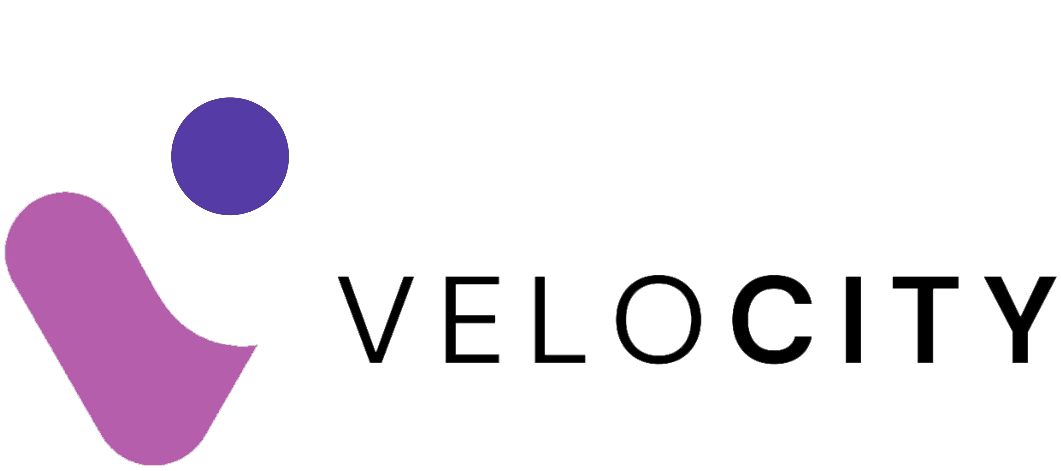Services List
Web design is evolving at an unprecedented pace, with new technologies and user expectations shaping the way websites are built and experienced. In 2025, websites must not only be visually appealing but also fast, accessible, and highly interactive. What was once considered cutting-edge in 2024 is already outdated, and businesses must stay ahead of these shifts to maintain engagement and conversions.
At Velocity, we remain at the forefront of these advancements, designing high-performing, aesthetically impressive websites that align with the latest web standards. Below, we explore the most influential web design trends for 2025, ensuring your website remains both functional and visually captivating.
-Feb-11-2025-02-49-45-0809-PM.jpg?width=1750&height=875&name=Feature%20images%20velocity_%202500%20x%201500%20(1750%20x%20875%20px)-Feb-11-2025-02-49-45-0809-PM.jpg)
Covered in this article
1. Embracing Colour Trends for Digital Comfort
2. Typography as a Design Element
3. The Rise of Anti-Design & Imperfect Aesthetics
4. Sustainable Web Design for a Greener Future
5. Experimental Navigation
6. The Power of Big Blocks & High Contrast
7. Brutalist Web Design – A Rebellious Comeback
8. Motion Design with Purpose
9. The Evolution of Scrolling Animations
10. Micro-Interactions & Micro-Animations
11. The Return of Negative Space
12. Interactive 3D Models
13. Gamified Web Design
14. Smart Video Content
15. Voice-Activated Interfaces
Conclusion
FAQs
1. Embracing Colour Trends for Digital Comfort
In recent years, web designers leaned towards bold, saturated hues to grab attention. However, 2025 brings a shift towards soothing, warm tones that create a more welcoming, user-friendly digital experience.
- Mocha Mousse, the Pantone Colour of 2025, reflects this trend, promoting visual comfort and sophistication.
- Multi-tonal colour schemes are rising in popularity, blending soft gradients with bold accents to create contrast without overwhelming users.
- Dark mode options remain a staple, reducing eye strain while adding a modern, sleek aesthetic.
2. Typography as a Design Element
Typography in 2025 is not just about readability; it is a core visual feature of web design.
- Variable fonts allow for dynamic, scalable typography, improving both design flexibility and site performance.
- High-contrast pairings of serif and sans-serif fonts create eye-catching visuals.
- Maximalist typography with oversized, layered text adds artistic flair to digital interfaces.
3. The Rise of Anti-Design & Imperfect Aesthetics
While traditional design principles focus on balance and structure, anti-design challenges these norms by embracing intentional imperfection.
- Asymmetrical layouts, experimental typography, and clashing colours add personality to web pages.
- This trend moves away from “pixel-perfect” design and embraces hand-drawn elements, rough textures, and human imperfections.
- Websites are becoming more expressive, prioritising creativity over rigid design rules.
4. Sustainable Web Design for a Greener Future
Web sustainability is a growing priority in 2025, focusing on reducing digital carbon footprints through efficient coding and hosting solutions.
- Eco-friendly hosting services are being widely adopted.
- Designers focus on optimised media (compressed images and videos) for faster load times and lower energy consumption.
- Minimalist, streamlined designs eliminate unnecessary elements, leading to faster and more sustainable websites.
5. Experimental Navigation
Navigation is no longer just about drop-down menus and static links. 2025 is all about engaging, immersive navigation experiences.
- Non-linear navigation allows users to explore content in a more interactive way.
- Gesture-based navigation (e.g., swiping and scrolling effects) enhances user engagement.
- 3D transitions and spatial interfaces provide a cinematic browsing experience, making websites feel more like immersive digital spaces.
6. The Power of Big Blocks & High Contrast
Designers in 2025 are shifting towards bold, structured layouts that use big blocks of content combined with high-contrast colours.
- Websites are designed using block-based sections that divide content clearly and improve readability.
- Contrasting colour schemes create visual hierarchy, guiding users naturally through a website.
- This approach enhances modern aesthetics and user engagement while maintaining clarity and accessibility.
7. Brutalist Web Design – A Rebellious Comeback
Brutalism is making a resurgence in 2025, rejecting polished, template-based design in favour of raw, unfiltered digital experiences.
- Bold typography, grid-based layouts, and monochrome colour schemes define this movement.
- Inspired by punk aesthetics, brutalist websites feel authentic, direct, and refreshingly simple.
- The trend appeals to brands seeking to stand out with edgy, unrefined digital aesthetics.
8. Motion Design with Purpose
Animations are becoming more subtle and intentional, enhancing usability rather than overwhelming users.
- Micro-animations add dynamic feedback to interactions, making websites feel more intuitive.
- Scrolling animations engage users by revealing content gradually, making pages feel alive.
- Smart loading animations improve perceived performance, making delays feel less noticeable.
9. The Evolution of Scrolling Animations
Scrolling effects have moved beyond parallax into full-scale storytelling tools.
- Interactive scroll effects reveal new content as users move through a page.
- Websites use scrolling as a way to convey brand narratives, making each scroll a new discovery.
- This trend enhances user engagement and keeps visitors exploring longer.
10. Micro-Interactions & Micro-Animations
Small, subtle animations are being widely used to enhance the user experience.
- Hover effects, button animations, and real-time feedback make digital interactions feel seamless.
- These micro-interactions contribute to engagement and satisfaction, guiding users intuitively.
- Ecommerce sites, in particular, leverage micro-animations to highlight product features dynamically.
11. The Return of Negative Space
Negative space (also known as white space) is becoming a crucial design tool in 2025.
- Clean, uncluttered layouts improve readability and focus user attention.
- Websites like Apple.com use negative space effectively to enhance product presentation.
- This design approach results in elegant, modern interfaces that feel premium and user-friendly.
12. Interactive 3D Models
With advancements in web technology, 3D elements are becoming a major trend.
- Product showcases use 3D models to offer 360-degree views, improving online shopping experiences.
- Gamified interfaces integrate 3D interactive content, making browsing more immersive.
- WebGL and Three.js technologies allow for seamless 3D experiences within websites.
13. Gamified Web Design
Gamification is becoming a powerful engagement tool.
- Websites integrate interactive challenges, quizzes, and points-based systems.
- Rewards and incentives encourage users to stay engaged.
- Gamification works well for marketing campaigns, ecommerce, and educational platforms.
14. Smart Video Content
Video remains dominant, but 2025 brings a more strategic approach.
- Short, purposeful videos replace long autoplay videos.
- AI-driven video content personalises user experiences based on visitor behaviour.
- Optimised video formats reduce loading times and improve site performance.
15. Voice-Activated Interfaces
With the rise of voice search, voice navigation is becoming a key feature in web design.
- AI-driven voice commands allow for hands-free interaction.
- Ecommerce sites are integrating voice search to enhance shopping experiences.
- Accessibility is significantly improved, making websites more inclusive.
Conclusion
The web design landscape in 2025 is all about enhanced interactivity, sustainability, and personalisation. From embracing anti-design aesthetics to motion-driven experiences, these trends shape how businesses engage with users.
At Velocity, we integrate these cutting-edge design trends to create highly functional, visually compelling websites that keep businesses ahead of the curve. If you’re looking to modernise your website and stay ahead of digital trends, get in touch with us today.
Transform your website with the future of web design. Contact Velocity today!
FAQs About Key Web Design Trends for 2025
1. What are the biggest web design trends for 2025?
The most significant web design trends for 2025 include soothing colour palettes, experimental navigation, anti-design aesthetics, sustainable web design, bold typography, motion design, and gamified interfaces. Websites are becoming more interactive, visually engaging, and user-friendly while focusing on performance and accessibility.
2. How can businesses incorporate sustainable web design?
Businesses can adopt sustainable web design by using eco-friendly hosting, optimised media formats, efficient coding practices, and minimalist designs. Reducing a website’s carbon footprint improves load times, enhances user experience, and aligns with environmentally conscious brand values.
3. Why is anti-design becoming a trend?
Anti-design is gaining popularity because it rejects perfection in favour of personality and authenticity. Asymmetrical layouts, clashing colours, and hand-drawn elements create a unique, human-centric aesthetic that resonates with users looking for a raw, expressive digital experience.
4. How does motion design enhance user experience?
Motion design in 2025 is about purposeful, subtle animations that enhance usability rather than distract users. Micro-interactions, scrolling animations, and smart loading effects make web browsing smoother and more engaging, keeping users interested and guiding them through content intuitively.
5. Is dark mode still relevant in 2025?
Yes, dark mode remains a highly sought-after feature in 2025. It reduces eye strain, enhances aesthetics, and provides a modern, high-contrast design that works well for both desktop and mobile experiences.
6. How does typography impact web design in 2025?
Typography is a key design element in 2025, with variable fonts, high-contrast pairings, and maximalist typography taking centre stage. Brands are using bold, expressive fonts to establish their unique identity while improving readability and user engagement.
7. What is experimental navigation, and how does it work?
Experimental navigation breaks away from traditional menus and static links by introducing gesture-based navigation, immersive scrolling, 3D transitions, and unconventional layouts. It enhances user engagement and allows brands to create a more memorable, interactive web experience.
8. How are 3D elements changing web design?
3D elements, enabled by WebGL and Three.js technologies, allow users to interact with products, explore spaces, and engage with digital content in new ways. This trend is particularly popular in ecommerce, product showcases, and gamified websites.
9. What is gamified web design, and why is it effective?
Gamification integrates interactive challenges, quizzes, and reward systems to engage users. It works well for ecommerce, marketing campaigns, and educational platforms, as it encourages users to spend more time on a site while enjoying a fun, rewarding experience.
10. How can businesses optimise their websites for voice search?
With the rise of voice-activated interfaces, businesses should focus on optimising content for natural language queries, using structured data, and incorporating AI-driven voice commands. This improves accessibility and enhances user convenience, particularly for mobile users.
11. What role does colour psychology play in 2025 web design?
Colour psychology is essential in shaping user emotions and behaviours. The Pantone Colour of 2025, Mocha Mousse, reflects a move towards soothing, warm tones that create a comfortable, visually calming user experience. Brands use multi-tonal schemes to guide users naturally through their website.
12. How does negative space improve website design?
Negative space (or white space) enhances readability, focus, and visual hierarchy. Leading brands, such as Apple, use negative space to create clean, elegant layouts that allow content to stand out without overwhelming the user.
13. Will brutalist web design work for all businesses?
Brutalist design is best suited for edgy, bold brands looking to stand out. It focuses on raw aesthetics, grid-based layouts, and minimal embellishments, appealing to companies in fashion, technology, and creative industries. However, businesses prioritising a traditional, polished look may opt for a different approach.
14. How do micro-interactions improve user experience?
Micro-interactions provide real-time feedback and make websites feel more dynamic and interactive. Examples include hover effects, animated buttons, and subtle loading animations, which improve engagement and create a more intuitive browsing experience.
15. What makes smart video content different from traditional video?
Smart video content is strategic and intentional, focusing on high-quality, purpose-driven videos rather than autoplay distractions. AI-powered personalisation ensures that users see relevant content based on their interests and behaviours, leading to higher engagement and conversions.
16. Why is interactive scrolling a game-changer in 2025?
Scrolling animations enhance storytelling by revealing content dynamically as users move through a page. This keeps visitors engaged longer, making the website feel more like an interactive experience rather than a static information hub.
17. How can businesses implement progressive lead nurturing forms?
Progressive lead nurturing forms use CRM-integrated, dynamic fields that adjust based on user behaviour and previous interactions. Instead of overwhelming visitors with lengthy forms, each visit collects new information, making conversions more seamless and personalised.
18. How can chatbots be improved in 2025?
Chatbots are evolving into “Chatbuds”, offering human-like interactions with advanced AI-powered responses, natural language processing, and predictive analytics. This allows businesses to enhance customer support, provide instant assistance, and build stronger connections with users.
19. What are the benefits of blending photos with graphical elements?
Blending photography with graphical overlays creates a dynamic, visually appealing aesthetic that enhances branding. This trend is widely used in social media, digital marketing, and web design, reinforcing a company’s identity and engaging users with creative storytelling.
20. What should businesses focus on when redesigning their website for 2025?
When updating a website for 2025, businesses should focus on:
- User experience (UX) and accessibility
- Fast loading speeds and sustainability
- Engaging, interactive design elements
- Personalised content and AI-driven features
- Aesthetic trends such as bold typography, high-contrast layouts, and immersive storytelling
Keeping up with these trends ensures a website remains modern, functional, and competitive in a rapidly evolving digital landscape.





